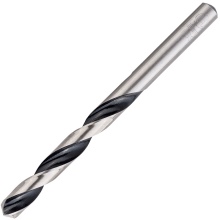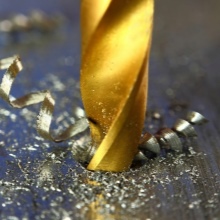What are HSS drills and how to choose them?

Drills are used in many areas of human life. The variety of them on the market is simply amazing. Before starting work, a beginner should study all types. In this article, we will focus on HSS drills, their features and selection rules.

What it is?
HSS, or HighSpeedSteel (stands for High Speed - high speed, Steel - steel) - this marking means that the tool (drill, tap, milling cutter) is made of high-speed steel, which is clear from the English translation of the abbreviation words. The material has a hardness of 62 to 65 HRC. Compared to high-carbon steels, this is a thinner metal, but with higher hardness values. The name is used for all the materials of the group, but most often it is P6M5. The alloy has an average productivity, it is suitable for operations with metals, materials with a strength of less than 900 MPa, the manufacture of small cutters.
Most of the steels of the group contain tungsten - its proportion is quite high. There is also a lot of carbon there. The advantages of this steel include strength and price, which is lower than that of carbide cutting products. In addition, they are excellent tools for intermittent cutting. The disadvantage is the lower speed of the drill when compared to carbide tools.
High-speed steels can be divided into types:
- high-speed high-alloy steels;
- molybdenum (designate M);
- tungsten (denoted by T).



The types are formed by the type of alloying substance in the alloy.
Tungsten is now less and less used, as it has a high cost, and is also a scarce component. The most commonly used steel is T1 (general purpose steel) or T15, which contains cobalt, vanadium. As a rule, the latter is used for high-temperature work and with high wear.
From the name it is clear that the materials of the M-group are dominated by such an alloying element as molybdenum, the same or more tungsten and cobalt are contained.
Thus, vanadium and carbon make steel even more resistant to rapid wear.



What are they?
Drills come in many different shapes. Each of them is applied in a specific area. All HSS drills are required for metal cutting.
Spiral suitable for making holes in parts made of special alloys, wear-resistant steels, steels for structures with strengths up to 1400 N / mm2, both normal and hardened, from gray or ductile iron. It is used both in manual electric and pneumatic tools, and in metal-cutting machines.
Step drill used to create holes of different diameters in different types of materials. The appearance of such a drill resembles a cone with a stepped surface.
Core drill - a hollow cylinder, used to create holes in steel alloys and non-ferrous metals. Removes metal around the edge of the hole, leaving the core intact.
There are a large number of diameters, shapes, types.



Marking
HSS Is the universal mark for high speed steels, HSS Co for cobalt containing grades. Steel has a hardness index of 63 to 67 HRC. Anti-corrosion and acid-resistant, used for large-diameter tools and disk cutters, for cutting cast iron, copper, brass and bronze, aluminum and its alloys.
If we dwell on the markings in more detail, then there are the following designation variations:
- HSS-R - low endurance of the drill;
- HSS-G - means that the cutting part is processed with cubic boron nitride, increased durability of the drill;
- HSS-E - steel with a proportion of cobalt, for difficult materials;
- HSS-G TiN - tools with a surface treated with a composition containing titanium nitride;
- HSS-G TiAlN - tools coated with nitride, aluminum, titanium;
- HSS-E VAP - Drill marking for cutting stainless steel.
Domestic manufacturers use other markings. There are letters M and T under the numbers (for example, M1).



Selection Tips
To select the right drill, you need to pay attention to important points.
- Examine material characteristics and drill capabilities to ensure the tool meets the requirements of the job.
- Look at the color of the product. He can talk about how the metal was processed.
- steel color shows that no heat treatment has been carried out;
- yellow - the metal is processed, the internal stress in the material is eliminated;
- bright golden otint indicates the presence of titanium nitride, which increases wear resistance;
- black - the metal is treated with hot steam.
- Examine the markings to find out the type of steel, diameter, hardness.
- Find out about the manufacturer, consult with specialists.
- Investigate the issue of sharpening tools.
Drills are often sold in sets, for example with different diameters. The issue of acquiring such a tool requires an understanding of what purposes a drill is required for and how many options can be used.
The set, as a rule, contains popular and rarely used tools.



For information on how to make a drill sharpener on a grinder, see the video below.













The comment was sent successfully.